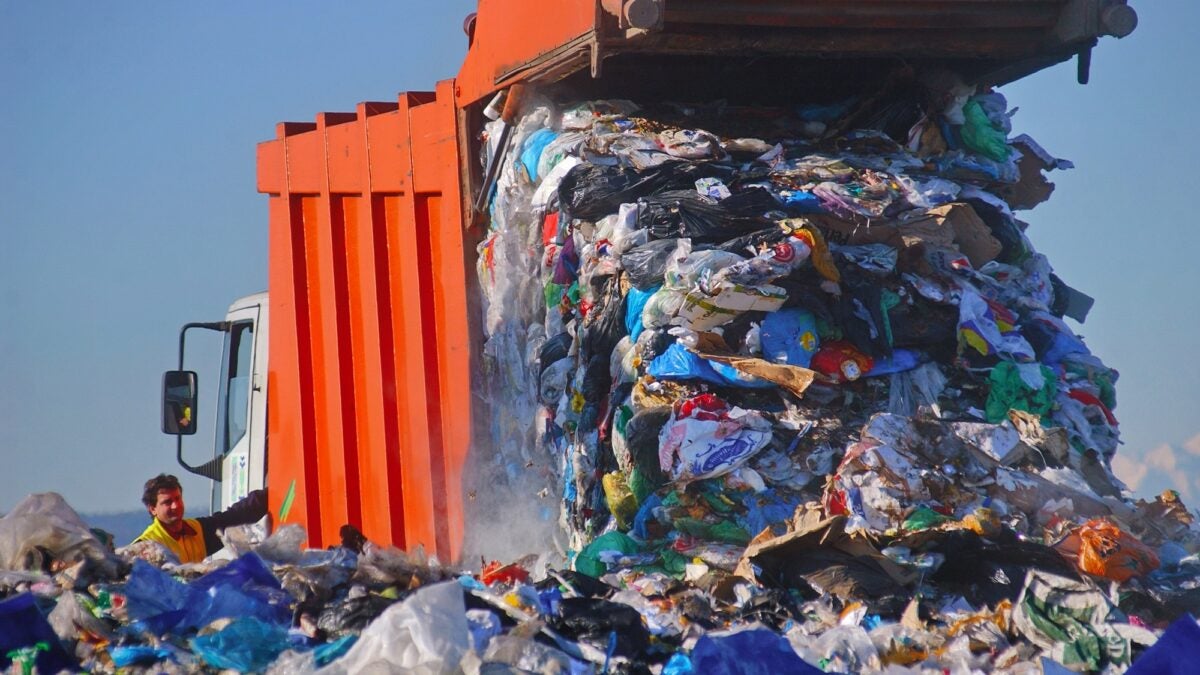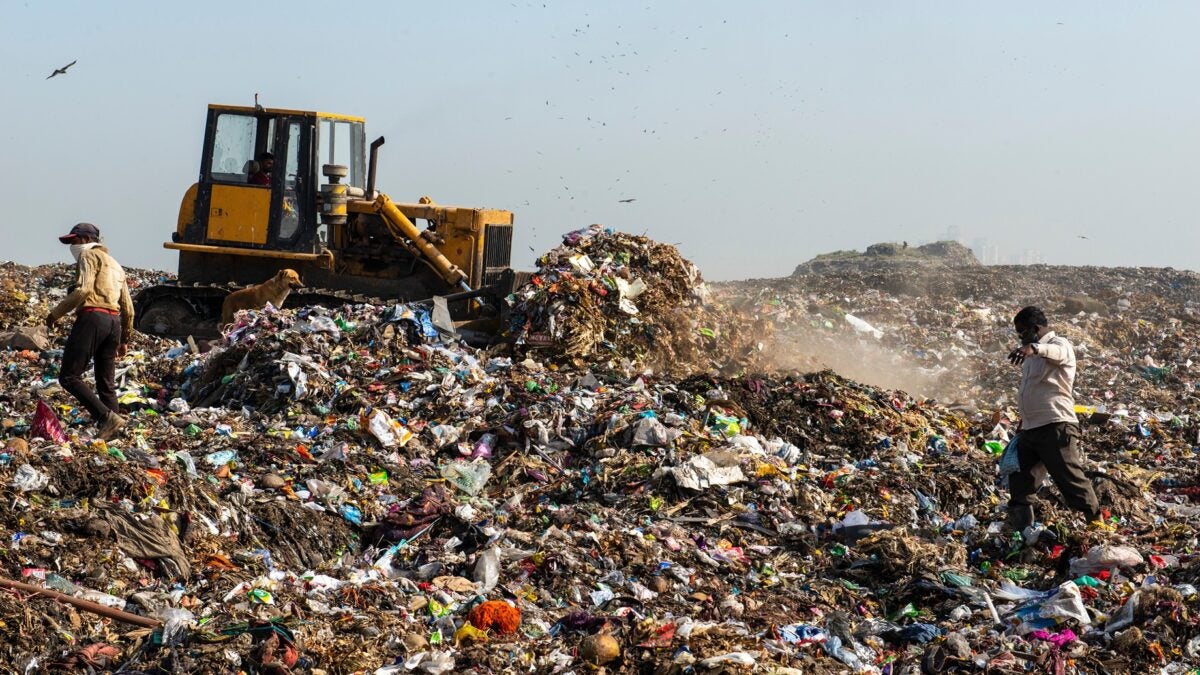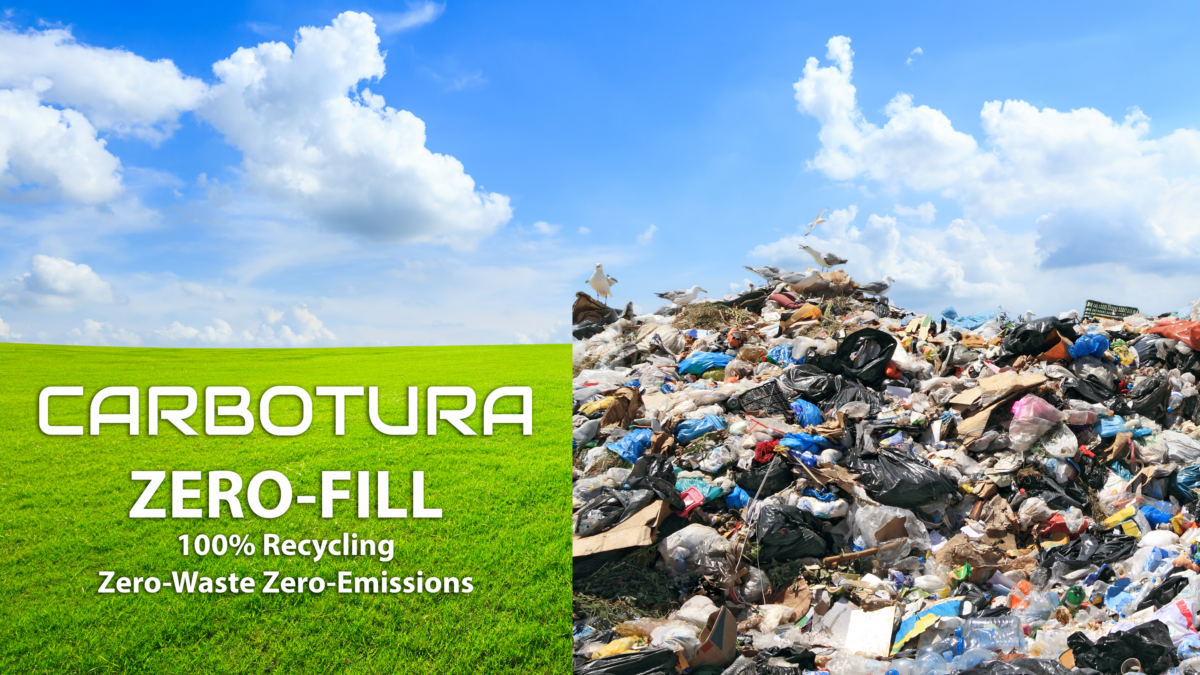Imagine if overflowing landfills could turn 100% of their waste into sellable, useful materials. Gravitas Carbotura believes it has achieved that goal. Its Zero-Fill system diverts trash from landfills, requires no waste sorting and costs landfills nothing. In addition, the company captures carbon dioxide from the air to help produce biofuel.
Much of the wasted food and recyclable materials in the U.S. ends up in landfills. A recent report by Last Beach Cleanup and Beyond Plastics said only 5% of plastic is recycled in the U.S. The Environmental Protection Agency estimates the figure is 9%. Waste that doesn’t get composted, reused or recycled is filling up landfills in the U.S., and they are running out of space.
Carbotura aims to be part of the transition to a circular economy that reuses materials instead of sending them to landfills.
The Naples, Florida-based company has two divisions. Zero-Fill takes waste from landfills and separates it out into useful materials. Biocarbon facilities, meanwhile, grow hemp in large quantities to capture carbon dioxide from the air, and the biomass is then used as a biofuel input.
Unlike many waste management or recycling strategies, Zero-Fill doesn’t require sorting or separating to process solid waste.
Carbotura uses microwave pyrolysis reactors, which heat materials to catalyze thermochemical decomposition reactions, to separate materials at the nanoscale level using different frequencies, Tyler Wood, director of environmental, social and governance, and sustainability at Carbotura, told FreightWaves.
Biomass or garbage is sent through the chamber. Usable and sellable materials such as water, synthesis gas, renewable fuels and char come out of the process. Carbotura uses syngas and renewable fuels produced to power its Zero-Fill or biocarbon facility and captures any carbon emissions that result from the process.
“There is enough exposed carbon on the planet to supply all human and plant needs if properly captured and recombined,” Carbotura states on its website.
Circular economy
The majority of the U.S. economy is linear, meaning we take materials from the Earth, manufacture products with the materials and throw those products into landfills after we’re done with them. To enhance sustainability, many are promoting a circular economy.
“A circular economy reduces material use, redesigns materials to be less resource intensive, and recaptures ‘waste’ as a resource to manufacture new materials and products,” the EPA said.
Eliminating waste and reusing resources in a circular economy could yield up to $4.5 trillion in economic benefits by 2030, according to the World Economic Forum. Yet only 8.6% of the U.S. economy is currently circular, Wood said. He called this the “circularity gap.”
“This transition from a linear take, make, waste economy towards a circular, zero-waste economy is actually one of the biggest opportunities in the history of mankind,” Wood said.
Zero-Fill details
Zero-Fill facilities use solid waste from landfills as the input for the pyrolysis systems.
“What we’ve done is basically put the trash can into the circular economy,” Wood said.
Carbotura’s modular landfill solution can be built to process 500 to 10,000 tons of solid waste daily. The reactors that process waste are housed in ISO shipping containers.
Each container has the capacity to process 100 tons of waste daily. Carbotura is working to increase the speed and scale of producing reactors. To start, the company will be able to deliver one container about every month. So for a facility with a capacity of 500 tons per day, it would take about five months from delivery of the first container of reactors to reach full capacity.
Facilities with the capacity for 2,000 tons of waste daily could process more than 24 million tons of waste over 30 years. Facilities with this capacity require about 3 acres of land for reactors and related equipment.
That volume of waste processing results in large quantities of usable and sellable outputs. The company uses technology to refine the separated basic molecules into high-value materials such as char, syngas and renewable fuels.
The char can be processed into activated carbon, which is commonly used for water and air filtration. Activated carbon can be processed further into graphite and graphene. Graphite is a major component of electric vehicles.
“It’s a critical element for the electrification of our transportation. On average, there’s 220 pounds of graphite in every EV, and the U.S. produces zero. So it’s a critical mineral for the decarbonization efforts and the electrification of our fleet,” Wood said.
Solving the problem of overflowing landfills
Many landfills are running out of space to expand, which may impact the cost of disposing of waste. Zero-Fill could help solve this problem. Carbotura’s goal is to divert and recycle 100% of garbage from landfills.
While many support expanding recycling of materials such as aluminum, paper, glass and plastics to reduce the amount of waste sent to landfills, Wood said recycling plastic is a “failed marketing campaign.”
About 27 million tons of plastic was dumped into landfills in 2018, making up 18.5% of the 146 million tons of waste that landfills received that year, the EPA said.

“We can start chipping away at those waste streams and even remediate landfills and put soccer fields on them,” Wood said. Zero-Fill facilities could help landfills last longer and even fully eliminate them over time.
The company’s Zero-Fill and biocarbon facilities are set up to work in developed countries where landfills are running out of space and in developing countries where large amounts of waste from the developed world have been shipped.
Carbotura has 17 Zero-Fill facilities in the pipeline in places like Australia, India, Thailand, and Central and South America. Each facility takes 18 to 24 months to become fully operational, depending on the location and size.
Biocarbon facility details
Carbotura began in 2018 with the idea to capture carbon dioxide from the air and turn it into useful outputs. The company’s biocarbon facilities can grow 25,000 acres worth of hemp in a 5 to 10-acre space to be used as a biofuel input.
It’s possible to add biocarbon facilities to Carbotura’s newer Zero-Fill facilities to turn waste from landfills into useful materials. Wood said many of the first places Zero-Fill facilities will be located are overwhelmed by their trash problem and are focused on addressing that as soon as possible. Therefore, none of the 17 Zero-Fill facilities in planning stages currently include a biocarbon facility.
“People can’t see the atmospheric carbon that’s going to choke off life on this planet. But they can see the waste,” Wood said.
But addressing increasingly dangerous levels of carbon dioxide in the atmosphere is still a global problem. “The risk ultimately is that we’re not acting fast enough,” Wood said.
These biocarbon facilities use the same pyrolysis reactors as Zero-Fill, with biomass as the only input instead of solid waste from landfills. Wood said the facilities run like data centers and can grow hemp from seed to 10 pounds in 30 to 40 days using a vertical farm hydroponic system.
“We’re capturing carbon more efficiently than any other system on the planet while also producing biographite and biographine. These are critical carbon-negative materials,” Wood said.
The cost of capturing carbon using this high-tech hydroponic system to grow hemp is lower than the Department of Energy’s goal of $100 per ton of carbon, Wood said.
He added, “I think that planet repair is going to be one of the largest industries that humanity has ever seen before because the solution has to mirror the size of the problem, and the size of the problem is basically catastrophic.”
Zero-Fill financing and potential
Carbotura does not charge landfills or municipalities for its Zero-Fill services.
“It created a zero out-of-pocket front-end cost for municipalities — that’s typically 20% to 50% of their budgets,” Wood said. He said it costs $40 to $70 to put each ton of trash in a landfill.
The company has secured 100% of the financing through a sovereign fund advisory group as long as it is able to secure a long-term agreement with the municipality or waste-handling company.
Zero-Fill facilities are “not inexpensive, but they’re critical infrastructure, especially as we’re trying to figure out how to decarbonize our supply chains and electrify our fleets,” Wood said.

Without any cost to landfills and without tipping fees, Carbotura can take waste materials from landfills or directly from trash trucks and recycle 100% of it into high-value materials, Wood said. By selling carbon sequestration credits, activated carbon and other byproducts, Zero-Fill has the potential to generate large amounts of revenue.
“We’re dealing with quite high margins in our business because there’s so much waste dumped into the ground,” Wood said. This service could be implemented at virtually any landfill around the world.
Carbotura plans to use part of its revenue to help support communities in which it operates Zero-Fill facilities. Many landfills are located in underprivileged areas that could benefit from initiatives focused on environmental, social, governance and Sustainable Development Goals.
Click here for more FreightWaves articles by Alyssa Sporrer.
Related Stories:
Sustainability is a way of doing business — Net-Zero Carbon
Circular logistics saving brands from supply chain woes











